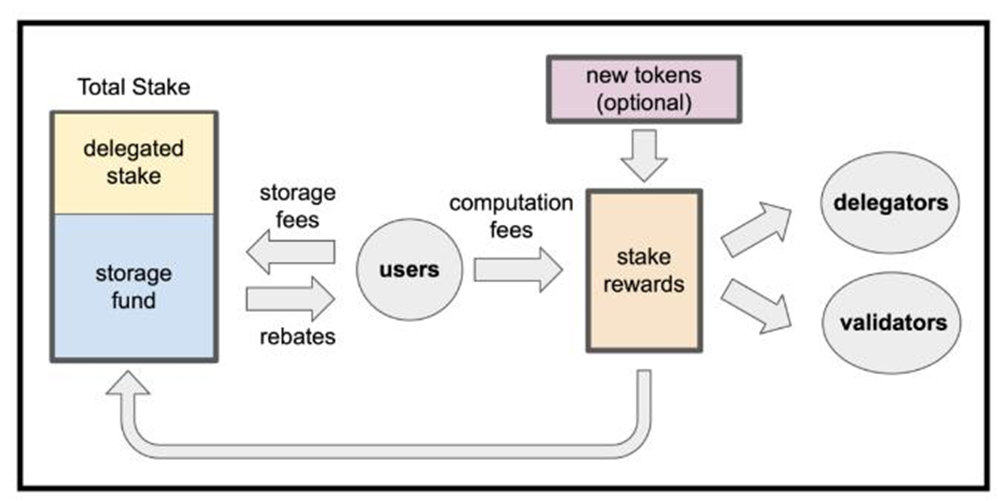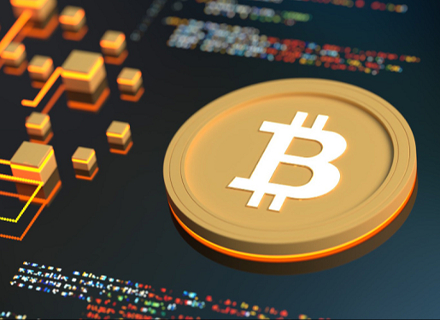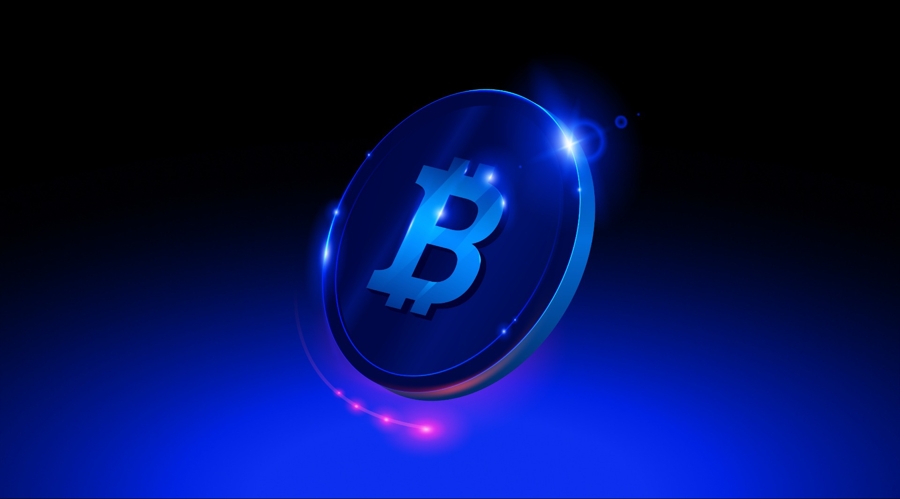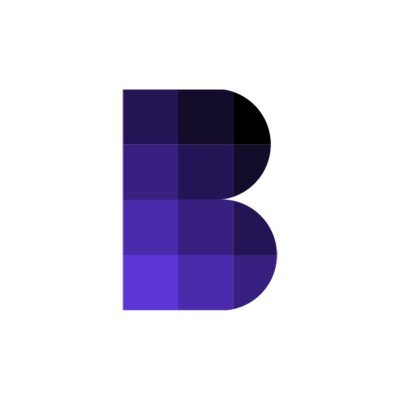Layer1 blockchain project Sui announced that its mainnet will be launched in the second quarter of this year, along with a series of educational activities and content called "Wave to Mainnet", to help the community understand the potential of the Sui protocol before the mainnet launch. Sui and Aptos are both part of the Meta-series blockchain, established almost simultaneously. Compared to Aptos, Sui focuses more on innovative underlying technology and aims to become the first internet-scale programmable blockchain platform. Although Sui has not developed as quickly as Aptos, projects driven by technological innovation often have the potential for explosive growth. With the imminent release of the Sui mainnet, it is believed that Sui will soon experience a period of rapid development.
Sui quietly tills the soil while Aptos stands in the spotlight
Aptos inherits the open source technology and development experience of the Die project over the past three years, which enables it to quickly build the underlying infrastructure and layout ecological projects. In contrast, Sui chose to build the Layer1 network from scratch, leading to a much slower development process. Therefore, Aptos was more attractive to investors in terms of attracting capital and attention in the early stages. Additionally, both as Layer1 public chains aimed at improving the security and scalability of the blockchain, and creating a high-performance blockchain infrastructure network for billions of people, there are differences in strategy and focus between the two.
Aptos places more emphasis on marketin, being marketed as a unique product created by the best developers from the IT industry, which has been effective in attracting a large number of investors. Last year, it launched its mainnet and went live, although its price has fallen over 76%, it has shown strong performance since the beginning of the year, and its total market capitalisation is still USD 2.08 billion. In terms of ecological project cooperation, Aptos focuses on cooperation with well-known companies, such as Google Cloud for infrastructure acceleration programs, NPIXEL for game cooperation, and MoonPay for payment integration in ecological system projects such as Petra, which have brought huge traffic and attention to Aptos and promoted the rapid development of its ecological projects.
Unlike Aptos, Sui places greater emphasis on innovative applications of underlying technology. For example, the improved Move language of Sui can more clearly indicate object ownership, mutability, and composability, making it naturally suitable for building metaverse infrastructure. In terms of ecological projects, since the Sui mainnet has not yet been launched, most of its projects are still in the testing stage, so Sui is far less well-known than Aptos in terms of attention. Therefore, in many cases, Aptos is like a superstar standing in the limelight, while Sui is more like a cultivator quietly paying in the background.
Sui and Aptos are both Layer1 public chains, and their founding teams both come from Diem and belong to the same Move track, so they have a competitive relationship from the beginning. However, since Sui built the Layer1 network from scratch, the development process was relatively stagnant, and most of the market's attention was focused on Aptos in the early stages, so the competition between the two was not obvious at the beginning. Until recently, Sui's successful completion of the Wave 2 test and announcement of the imminent launch of the mainnet has caught the attention and vigilance of Aptos. Last month, Sui's CTO accused Aptos of pressuring the Pontem team, the organizers of MOVECON (the first large-scale forum in the Move ecosystem), to cancel the Sui team's speech and even remove the Sui Foundation from the list of event organizers. This indicates that Aptos has begun to view the emerging Sui as a competitor and has indirectly confirmed Sui's market position and potential.
Compared to Aptos, Sui has clear advantages in underlying technology
Although Sui still has many shortcomings compared to Aptos, such as in terms of ecosystem projects and community size, Sui has been committed to innovation and application in underlying technology and has accumulated rich technological advantages in the past year. From Sui-Move language to Narwhal-Tusk consensus mechanism to storage fund token economics, Sui has made significant innovations in every aspect of blockchain projects. In this respect, even compared to other new Layer1 public chains such as Aptos, Sui is unique.
Sui-Move
Aptos and Sui both use Move language, but they differ in some aspects. Aptos followed the classic design of the Diem white paper, while Sui upgraded and adjusted it to form the unique Sui-Move language. The biggest difference with Move is that Sui adopts an object-centric model instead of an address-centric model. Therefore, almost everything on Sui, such as tokens, smart contracts, NFTs, etc., can be represented as "objects." Each object has a series of attributes, including owner address, read/write properties, transferable properties, functional properties, etc. Sui-Move clearly states the ownership, sharing, mutable or immutable characteristics of objects, while Aptos does not. In addition, Sui's ownership API is more concise than Aptos' API because it more clearly displays the blockchain design. In terms of functionality, Sui-Move has certain advantages in security, smart contract support, programming mode flexibility, and compatibility over Move language.
Narwhal & Tusk
The consensus mechanism of Sui minimizes communication between validators in order to achieve lower latency in processing transactions. Sui's consensus mechanism is divided into two parts: Narwhal and Tusk. Narwhal is a memory pool protocol for storing unconfirmed blockchain transactions and broadcasting them before the consensus protocol validates them. Its task is to achieve consensus while maintaining data availability, and it is independent of the consensus protocol, allowing it to tolerate asynchronous or intermittent faults. Tusk is an asynchronous consensus protocol responsible for transaction ordering. The protocol uses shared randomness to eliminate additional communication between nodes and allows each node to determine the total order of transactions. When used in conjunction with the Narwhal protocol, it ensures high performance even in the event of failures.
In theory, the scalability of Sui's design has no known upper limit. In terms of security, compared to synchronous blockchains (i.e. most proof-of-work blockchains), Sui's security attributes can withstand adverse network conditions, network partitions, or DoS attacks on validators because it does not impose any synchronization assumptions on the network.
Developer Experience
Aptos' core feature is seamless upgrade, which allows developers to focus on building without disturbing users. In comparison, the Sui Software Development Kit (SDK) provides more convenience for developers. The SDK offers open-source, universal, and user-friendly tools, and allows developers to save a lot of time debugging smart contracts, waiting for audits, and building basic tech stack elements. Furthermore, the SDK also attempts to connect other ecosystems and non-crypto use cases, such as gaming APIs directly connecting to a universal Layer1 instead of a sidechain or gaming-focused L2; "SuiEcho" guides the community by promoting the portability of digital assets from other ecosystems to Sui; and "Handshake" is a frontend tool that serves as a channel for distributing, redeeming, and collecting Sui digital assets (such as payments and merchant coupons) to both crypto and non-crypto users.
Sui Token Economy
In addition to a series of technical innovations aimed at optimizing the system's composability and scalability, Sui also implements a unique token economics model. Unlike the token economics model of traditional proof-of-stake chains, Sui's token economics model adds a "storage fund" function. As blockchain is a data structure that only grows and never shrinks, the amount of data that needs to be maintained on the chain will increase over time, and costs will accordingly rise. This leads to later users of Sui having to pay higher fees than early users. The "storage fund" is designed to solve this problem by allowing early users to pay more fees, enabling all users to use the network based on similar fee levels.

Furthermore, Sui's storage fund also pays validators in the system, or people who actually store the blockchain data and complete data maintenance work. As maintenance work increases, payouts to validators also increase. This will incentivize more people to become validators in the system, and as more people become validators, the total available storage space will also increase, further reducing the gas fees for writing to the blockchain. Sui's token economics model is a typical representative of a highly scalable chain economics model, using game theory to ensure that gas fees remain relatively constant throughout the entire lifecycle of the blockchain.
Inventory of Sui Ecological Projects
MovEX
MovEX is the first AMM+ order book mixed liquidity DEX on Sui, which combines the advantages of AMM and order book to provide liquidity trading experience for everyone by creating mixed liquidity pools. Internally, MovEX has a settlement engine that allocates orders between AMM and order book, which ensures that the slippage of traders is minimized and the fairness of liquidity providers is guaranteed. Liquidity providers can also provide one-sided liquidity by customizing price ranges, effectively managing impermanent loss.
MovEX supports market trading and limit order trading, two features commonly found in centralized trading platforms. Ordinary users can provide liquidity to the liquidity pool with a customized price range, while professional traders and liquidity providers can become liquidity providers through the order book, similar to market makers in centralized exchanges. Currently, the MovEX product is still in the testing phase, and users can experience the product by linking to the application through the Sui Wallet.
Sui Wallet
Sui Wallet is a browser extension that serves as a portal to the Web3 world, allowing users to connect to DApps and sign human-readable transactions from trusted DApps. It is the official wallet of the Sui blockchain, allowing users to create, import, and persistently store mnemonic and derived private keys, transfer coins and NFTs, and view owned fungible tokens and NFTs. Sui wallet was initially developed for Sui developer testing and is currently the most widely recognized wallet on the testnet.
Suiswap
Suiswap is a DEX of the automatic market maker mechanism (AMM) on Sui chain, supporting the exchange and trading of native assets within the Sui ecosystem. Currently, Suiswap supports users to claim test tokens, trade or build LPs to provide liquidity to the liquidity pool, and the final form of the product will be seen after Sui mainnet goes live.
Leizd Protocol
Leizd Protocol is a decentralized lending application within the Sui ecosystem that operates lending function in over-collateralized form. The application uses decentralized dollar stablecoin USDZ as an intermediate asset and, like MakerDAO on the Ethereum chain, realizes risk control of lending products by minting stablecoins. In Leizd Protocol, the borrower can deposit crypto assets as collateral to mint USDZ, then borrow the required USDZ, and exchange it for stablecoins such as USDT or USDC to use. At maturity, the borrower only needs to return the borrowed USDZ and interest to withdraw collateral assets. Depositors can also collateralize crypto assets to mint USDZ for earning interest, or exchange USDZ for other crypto assets and deposit them into the deposit pool to earn interest.
It is reported that Leizd Protocol plans to deploy on multiple chains on Sui and Aptos networks, allowing users to realize lending and borrowing with assets on both chains. However, the test product of Leizd Protocol has not yet been launched and the product is still in the concept introduction stage.
BlueMove
BlueMove is a platform that supports the creation and trading of NFTs and has been successfully deployed on the Sui and Aptos networks. The platform's smart contracts use a modular system and clearly define the execution scope through standardized signatures, which allows for the introduction of new features over time without compromising security, such as collection offers, feature offers, and multiple cancellations.
In addition, BlueMove has issued a total of 300 million MOVE tokens, of which 5% is used for airdrops, 40% for rewarding active traders and collectors on the platform, 15% for rewarding users who stake MOVE tokens, and the remaining for financing and team development. The main utility of MOVE tokens is on-chain governance and membership benefits.
Currently, users can buy or sell NFTs on BlueMove and receive MOVE rewards. Moreover, users can also get a share of the platform's transaction fees and additional MOVE rewards by staking MOVE tokens.
Abyss Worlds
Abyss World is an action role-playing game developed by Metagame Industries based on the Sui Layer 1 blockchain, with a strong Web3 technology and gaming experience. It aggregates Web2 and Web3 game players, allowing players to experience immerse gameplay in a virtual world. The various characters, maps, and storylines within the game will be supported by Sui blockchain technology, enabling players to create a realistic gaming world. According to the roadmap, Abyss World will officially start public testing in the third quarter of this year.
In Web3 gameplay, NFTs are a key option to attract users to participate in projects early. Abyss World began the sale of its first batch of Genesis NFT Gazer series on March 23. These NFTs are not just small images, but are tied to in-game rights and features: players who own NFTs can share potential revenues within the game, gain more rare items and skins, and get early access to the game's internal testing. In addition, due to the deep collaboration with Mysten Labs, NFTs not only bind Abyss World's native game token AWT but also have the rights to Sui token airdrops, making it one of the top projects in the Sui ecosystem.
Summary
Sui is the first permissionless Layer1 blockchain designed from scratch and dedicated to providing a more user-friendly experience for Web3 users. However, technology only offers value when it solves actual problems and when people are willing to pay for it. Sui has been focused on innovating and applying underlying technology, which has brought it rich technical advantages. With the launch of Sui's mainnet approaching, it is now time to translate these technical advantages into market competitiveness. Through the "Wave to Mainnet" series of activities, Sui is moving from behind the scenes to the forefront, demonstrating the accumulated technical strength over the years. In the future, how underlying technology promotes overall DX/UX and who can attract more users and liquidity will be gradually answered over time.














